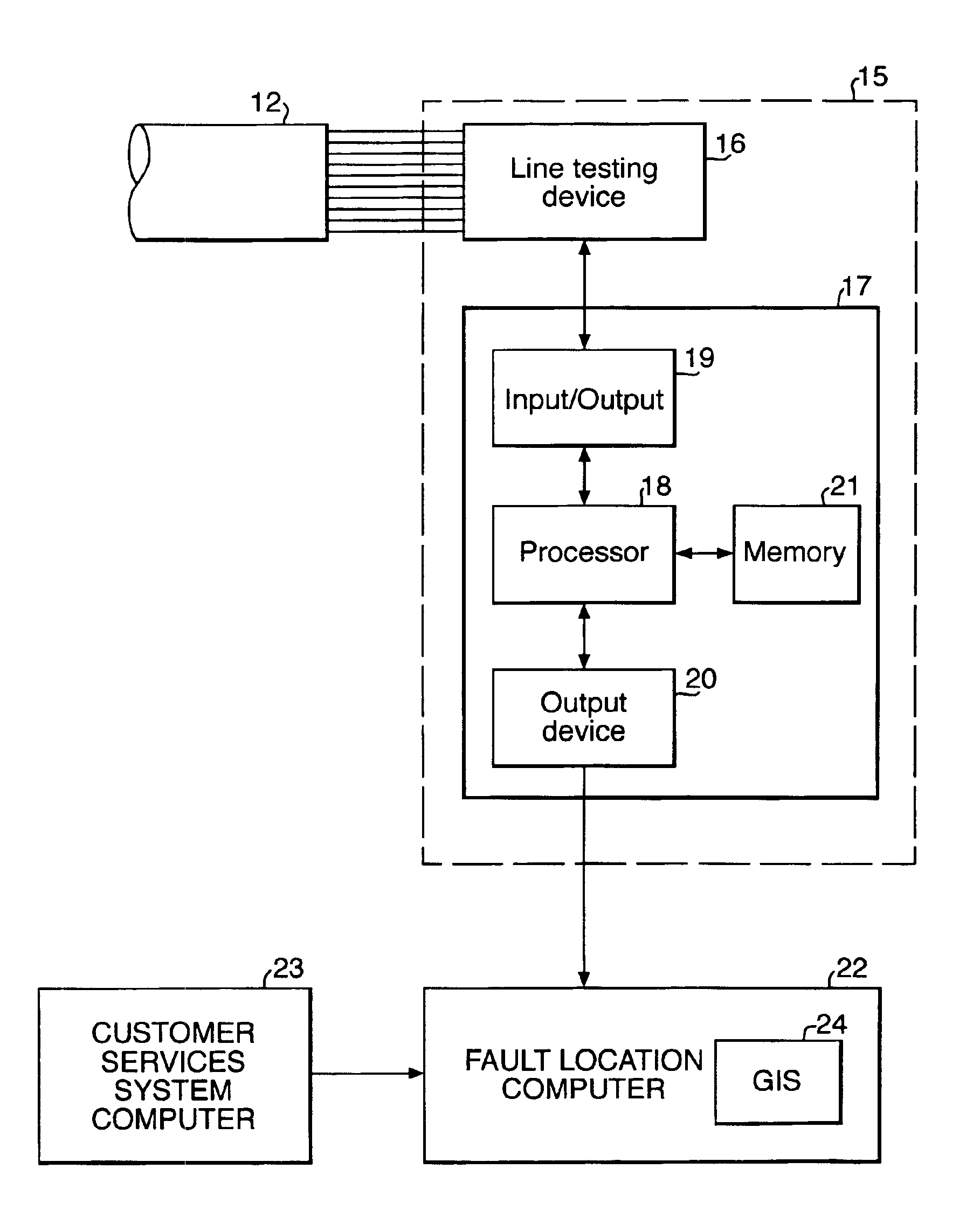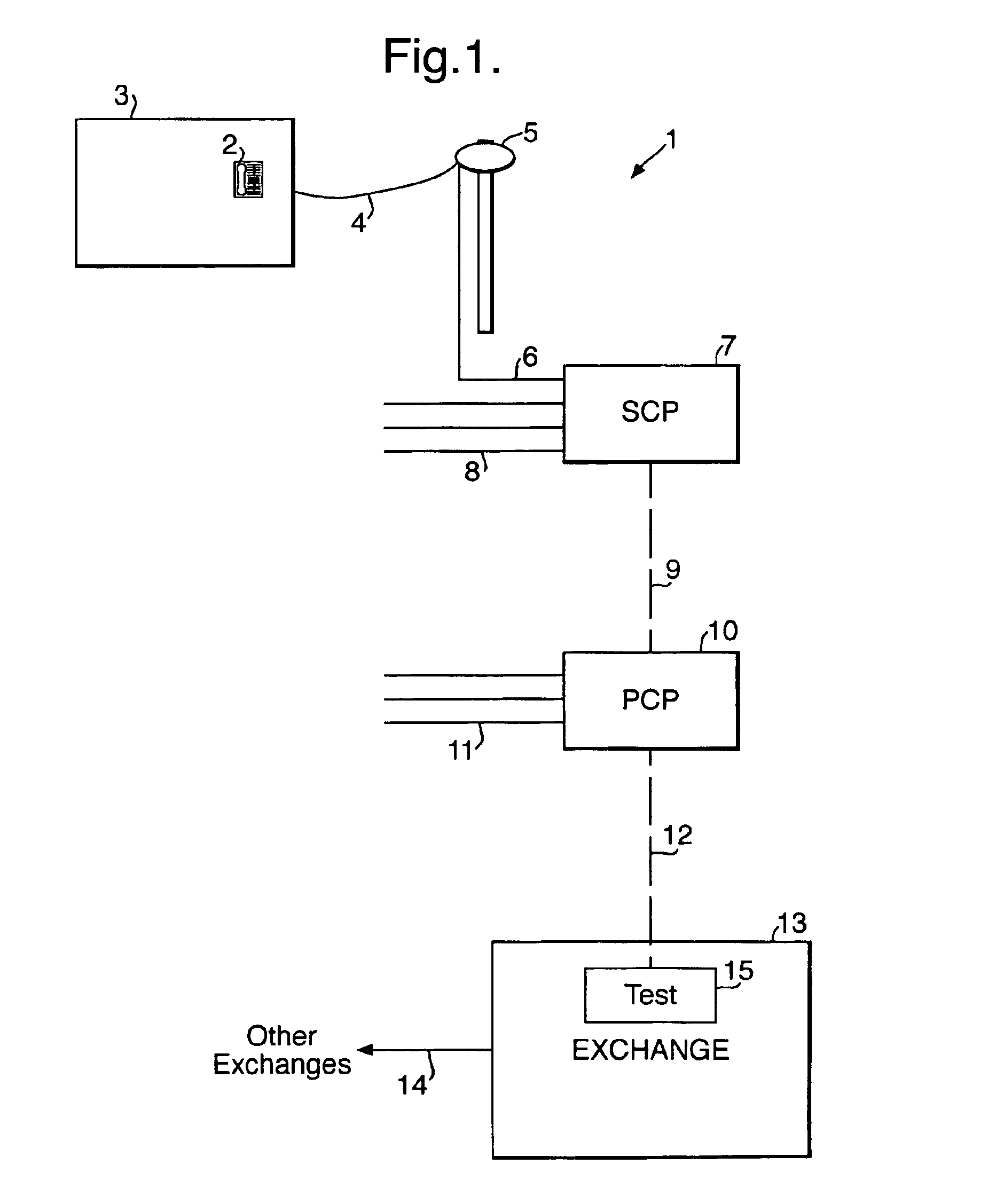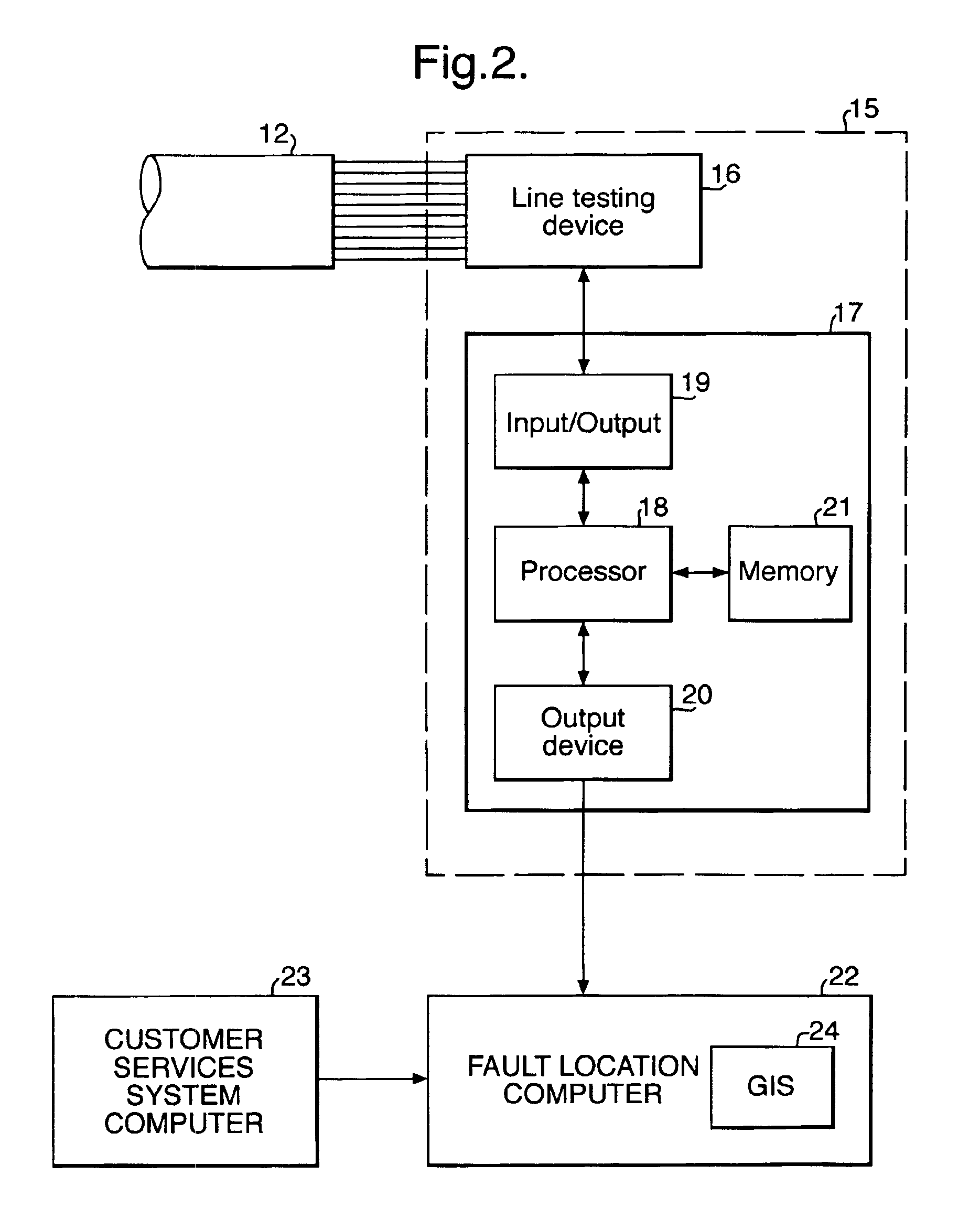Fault location in a telecommunications network
a technology for fault location and telecommunications network, applied in the direction of substation equipment, electrical equipment, surveillance/monitoring/testing arrangements, etc., can solve problems such as physical damage and particular faults in parts of public telecommunications networks
- Summary
- Abstract
- Description
- Claims
- Application Information
AI Technical Summary
Benefits of technology
Problems solved by technology
Method used
Image
Examples
Embodiment Construction
[0021]Referring to FIG. 1, a telecommunications network 1 includes a customer's terminal equipment 2 located, for example, at a customer's premises 3, a drop wire 4 connected between the customer's equipment and a pole mounted distribution point (DP) 5, a cable 6 extending from the distribution point 5 to a secondary cross-connection point (SCP) 7, further cables generally indicated at 8 extending from other distribution points (not shown) to the secondary cross-connection point 7, a cable 9 extending from the SCP 7 to a primary cross-connection point (PCP) 10, further cables generally indicated at 11 extending from other SCPs (not shown) to the PCP 10, a cable 12 extending from the PCP 10 to a local area exchange 13, a cable 14 linking the local area exchange 13 to other exchanges (not shown), and line test equipment 15 located in the exchange 13. The PCP 10 and the SCP 7 are for example street-side cabinets or underground junction boxes. As mentioned above, the part of the network...
PUM
 Login to View More
Login to View More Abstract
Description
Claims
Application Information
 Login to View More
Login to View More - R&D
- Intellectual Property
- Life Sciences
- Materials
- Tech Scout
- Unparalleled Data Quality
- Higher Quality Content
- 60% Fewer Hallucinations
Browse by: Latest US Patents, China's latest patents, Technical Efficacy Thesaurus, Application Domain, Technology Topic, Popular Technical Reports.
© 2025 PatSnap. All rights reserved.Legal|Privacy policy|Modern Slavery Act Transparency Statement|Sitemap|About US| Contact US: help@patsnap.com



